 by our College Data Analytics Team
by our College Data Analytics TeamMiami University - Oxford total enrollment is approximately 18,880 students. 16,079 are undergraduates and 963 are graduate students.
Male/Female Breakdown of Undergraduates
The full-time Miami University - Oxford undergraduate population is made up of 51% women, and 49% men.
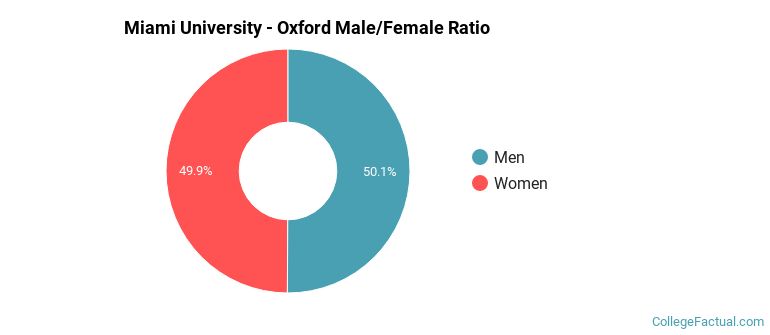
For the gender breakdown for all students, go here.
Miami University - Oxford Racial/Ethnic Breakdown of Undergraduates
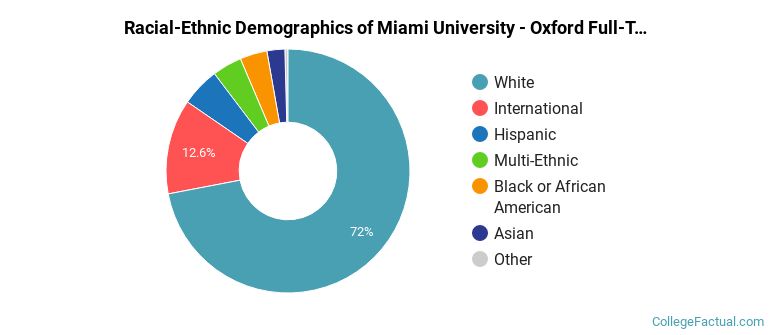
| Race/Ethnicity | Number |
|---|---|
| White | 12,092 |
| International | 1,400 |
| Hispanic | 867 |
| Multi-Ethnic | 652 |
| Black or African American | 577 |
| Asian | 403 |
| Unknown | 55 |
| Native Hawaiian or Pacific Islander | 10 |
See racial/ethnic breakdown for all students.
Male/Female Breakdown of Graduate Students
About 62% of full-time grad students are women, and 38% men.
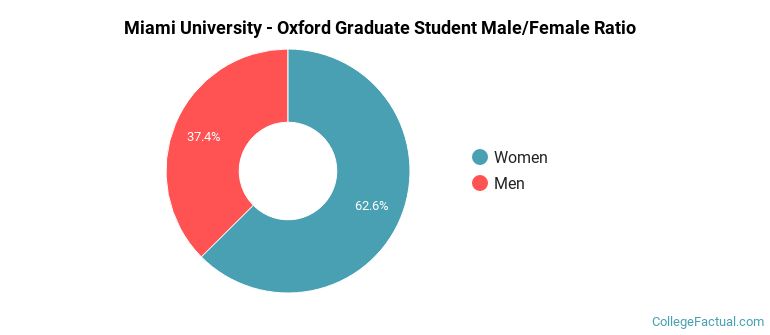
For the gender breakdown for all students, go here.
Miami University - Oxford Racial-Ethnic Breakdown of Graduate Students
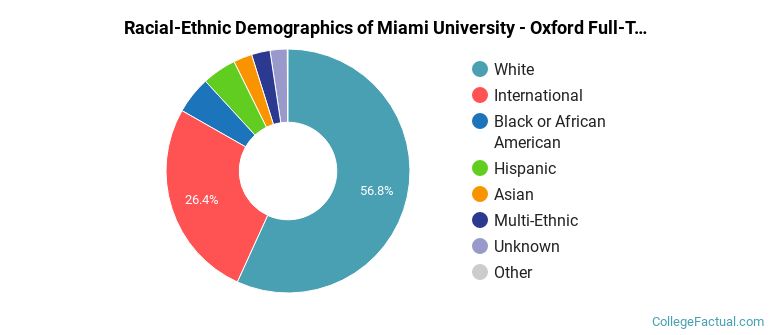
| Race/Ethnicity | Number |
|---|---|
| White | 580 |
| International | 202 |
| Hispanic | 54 |
| Black or African American | 48 |
| Multi-Ethnic | 36 |
| Asian | 26 |
| Unknown | 17 |
| Native Hawaiian or Pacific Islander | 0 |
See racial/ethnic breakdown for all students.
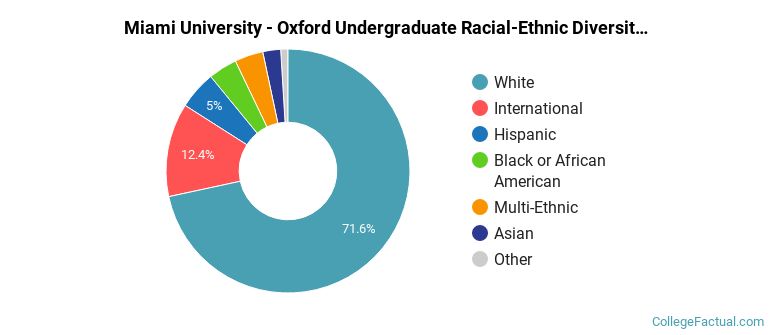
| Race/Ethnicity | Number |
|---|---|
| White | 14,074 |
| International | 1,672 |
| Hispanic | 1,010 |
| Multi-Ethnic | 745 |
| Black or African American | 719 |
| Asian | 475 |
| Unknown | 149 |
| Native Hawaiian or Pacific Islander | 12 |
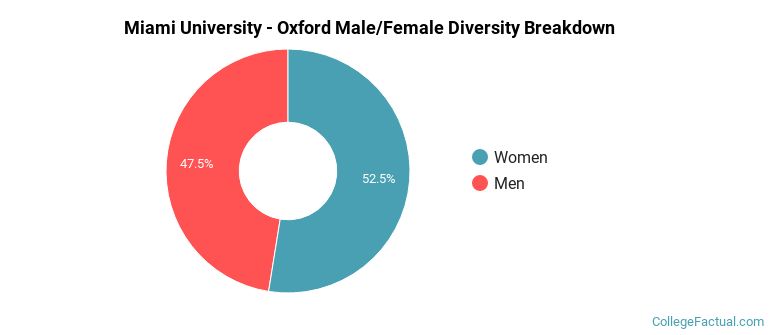
There are approximately 10,088 female students and 8,792 male students at Miami University - Oxford.
Miami University - Oxford ranks 334 out of 2,183 when it comes to geographic diversity.
40% of Miami University - Oxford students come from out of state, and 6.55% come from out of the country.
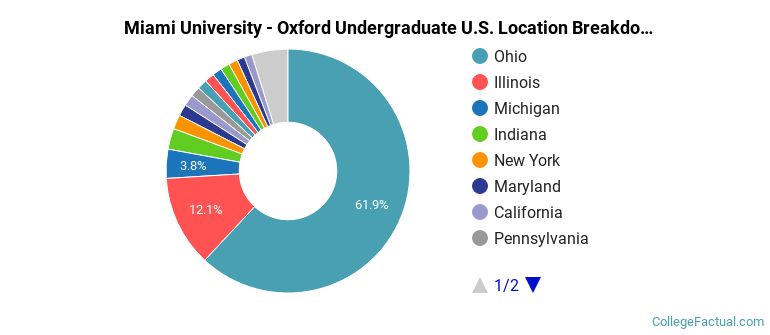
The undergraduate student body is split among 42 states (may include Washington D.C.). Click on the map for more detail.
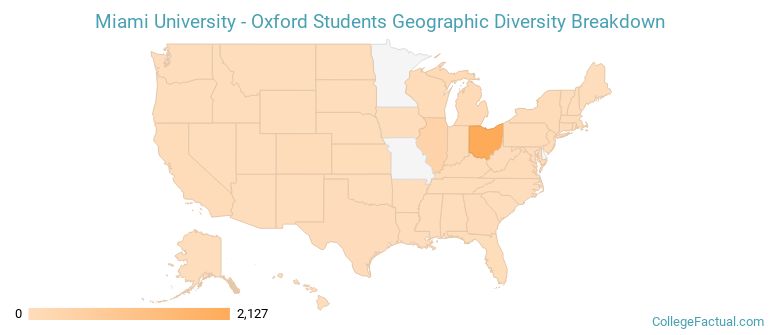
| State | Amount |
|---|---|
| Ohio | 2,127 |
| Illinois | 415 |
| Michigan | 132 |
| Indiana | 95 |
| New York | 65 |
Students from 90 countries are represented at this school, with the majority of the international students coming from China, India, and Vietnam.
Learn more about international students at Miami University - Oxford.
A traditional college student is defined as being between the ages of 18-21. At Miami University - Oxford, 75.55% of students fall into that category, compared to the national average of 60%.
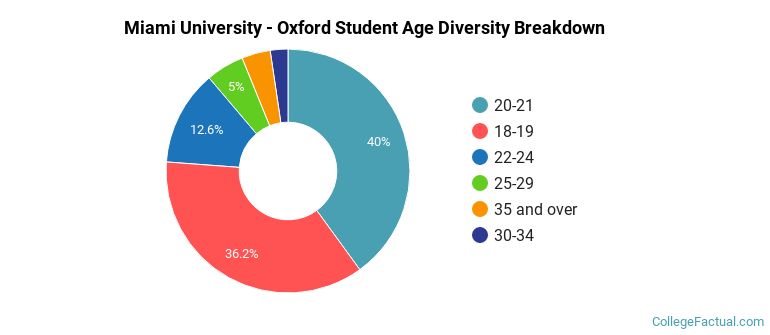
| Student Age Group | Amount |
|---|---|
| 20-21 | 7,811 |
| 18-19 | 7,072 |
| 22-24 | 2,466 |
| 25-29 | 986 |
| 35 and over | 743 |
| 30-34 | 458 |
| Under 18 | 0 |
Footnotes
*The racial-ethnic minorities count is calculated by taking the total number of students and subtracting white students, international students, and students whose race/ethnicity was unknown. This number is then divided by the total number of students at the school to obtain the racial-ethnic minorities percentage.
References
Department of Homeland Security Citizenship and Immigration Services
Image Credit: By Chris Light under License
Learn more about how College Factual creates their Diversity Rankings.